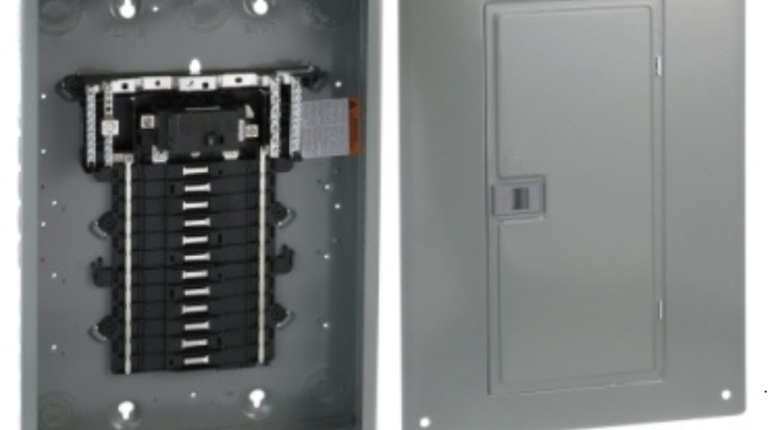The Square D QO Load Center 12125 is a crucial component in residential and commercial electrical systems. Designed by Schneider Electric, the QO series is known for its reliability, safety features, and ease of use. This article delves into the specifications, features, installation, and maintenance of the Square D QO Load Center 12125, providing a comprehensive overview for electricians, contractors, and DIY enthusiasts.
Overview of Load Centers
A load center, also known as a breaker box or electrical panel, serves as the main hub for distributing electricity throughout a building. It houses circuit breakers that protect electrical circuits from overloads and short circuits. The Square D QO series is particularly noted for its quick-make, quick-break mechanism, which ensures immediate disconnection of the circuit in case of faults.
Specifications of the Square D QO Load Center 12125
The QO Load Center 12125 comes with several important specifications:
- Dimensions: The dimensions of the 12125 model are designed to fit most residential applications, making it compact yet spacious enough to accommodate multiple circuits.
- Amperage Rating: The 12125 is rated for 125 amps, making it suitable for a variety of home and light commercial applications.
- Number of Circuits: This load center can accommodate up to 24 circuits, providing ample capacity for homes with multiple electrical appliances and systems.
- Type: It is a main breaker panel, meaning it includes a main breaker that can disconnect power to all circuits at once.
- NEMA Rating: The panel typically has a NEMA 1 rating, indicating it is suitable for indoor use in dry locations.
Key Features
1. QO Circuit Breakers
One of the standout features of the Square D QO Load Center is its compatibility with QO circuit breakers. These breakers are designed for rapid trip response and are easily identifiable by their unique design. The QO breakers offer:
- Visual Trip Indicator: A red indicator that shows when a breaker has tripped, making it easy to identify which circuit needs attention.
- Dual Functionality: Breakers can be used for both standard and ground fault circuit interruption (GFCI) applications.
2. Flexible Configuration
The QO Load Center allows for flexible configurations to meet specific electrical needs. The panel can be customized with different circuit breaker combinations, allowing homeowners to tailor the electrical distribution to their requirements.
3. User-Friendly Design
The load center features a user-friendly design that facilitates easy installation and maintenance. Its layout is intuitive, making it straightforward for electricians to wire the panel efficiently.
4. Durable Construction
Constructed from high-quality materials, the QO Load Center is built to withstand the test of time. It features a robust enclosure that protects the internal components from dust and moisture.
5. Enhanced Safety Features
Safety is a top priority in electrical installations. The QO Load Center is equipped with several safety features, including:
- Grounding Bus: Provides a common ground point for all circuits, enhancing safety and reducing the risk of electrical shock.
- Lockable Door: Allows for secure access to the load center, preventing unauthorized tampering.
Installation of the Square D QO Load Center 12125
Installing the Square D QO Load Center 12125 requires careful planning and adherence to local electrical codes. Here’s a step-by-step guide for installation:
Step 1: Planning
Before installation, assess your electrical needs and plan the layout of circuits. Consider the location of major appliances, outlets, and any future expansions.
Step 2: Gather Tools and Materials
You will need:
- Square D QO Load Center 12125
- QO circuit breakers
- Electrical wire (appropriate gauge)
- Screwdriver
- Wire stripper
- Voltage tester
- Level
- Drill (if mounting on a wall)
Step 3: Shut Off Power
Before beginning installation, ensure that the main power supply is turned off. Use a voltage tester to confirm that there is no electrical current in the existing panel.
Step 4: Mount the Load Center
Using a level, mount the load center securely to the wall. Ensure it is at a comfortable height for future maintenance.
Step 5: Install the Grounding Bus
Connect the grounding bus to the grounding electrode system, ensuring proper grounding for safety.
Step 6: Wire the Circuits
- Strip the ends of the electrical wires to expose enough copper for connection.
- Connect the wires to the appropriate terminals on the circuit breakers.
- Ensure that each circuit is properly labeled for future reference.
Step 7: Install the Main Breaker
If the load center is a main breaker panel, install the main breaker according to the manufacturer’s instructions.
Step 8: Close the Panel
Once all circuits are connected, close the load center cover securely. Ensure that it is locked if necessary.
Step 9: Restore Power
Turn the power back on at the main supply and test each circuit to ensure everything is functioning correctly.
Maintenance of the Square D QO Load Center 12125
Proper maintenance is essential for the longevity and safety of the load center. Here are some maintenance tips:
1. Regular Inspections
Periodically check the load center for any signs of wear, damage, or loose connections. Look for discoloration, which may indicate overheating.
2. Keep it Clean
Dust and debris can accumulate inside the load center, which may lead to overheating. Use a soft brush or vacuum to keep the interior clean.
3. Test Circuit Breakers
Regularly test the circuit breakers to ensure they are functioning correctly. Simply switch them on and off to verify their operation.
4. Professional Maintenance
Consider scheduling a professional inspection of the load center every few years. A licensed electrician can identify potential issues and ensure compliance with local codes.
Conclusion
The Square D QO Load Center 12125 is an efficient and reliable choice for electrical distribution in homes and light commercial buildings. Its user-friendly design, safety features, and flexible configurations make it a popular option among electricians and homeowners alike. By understanding its specifications, installation process, and maintenance requirements, you can ensure safe and effective electrical management for years to come.

